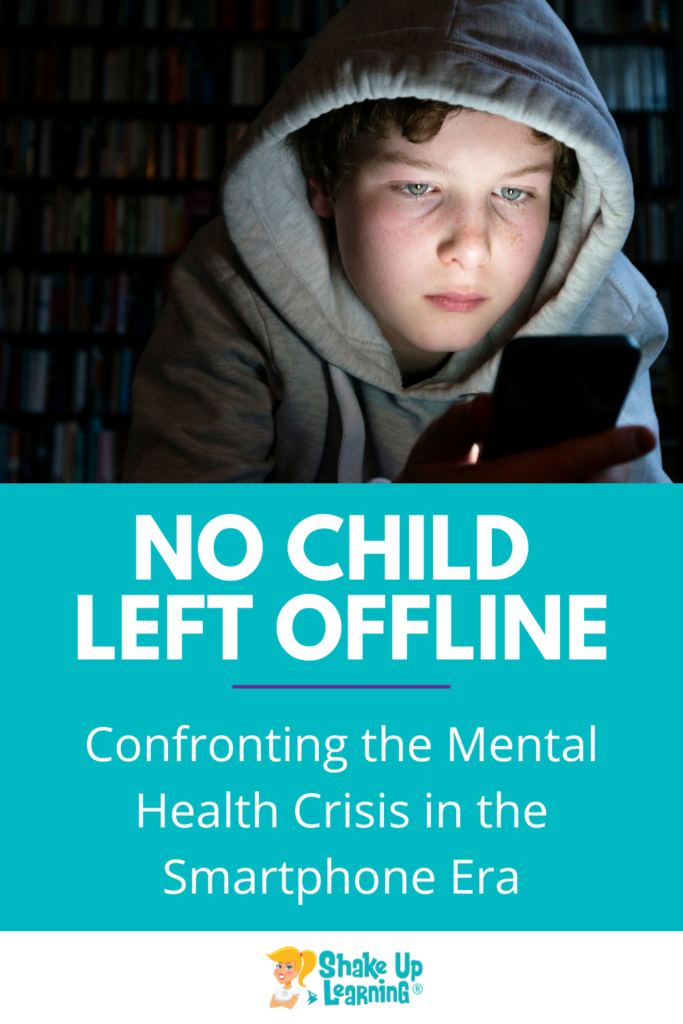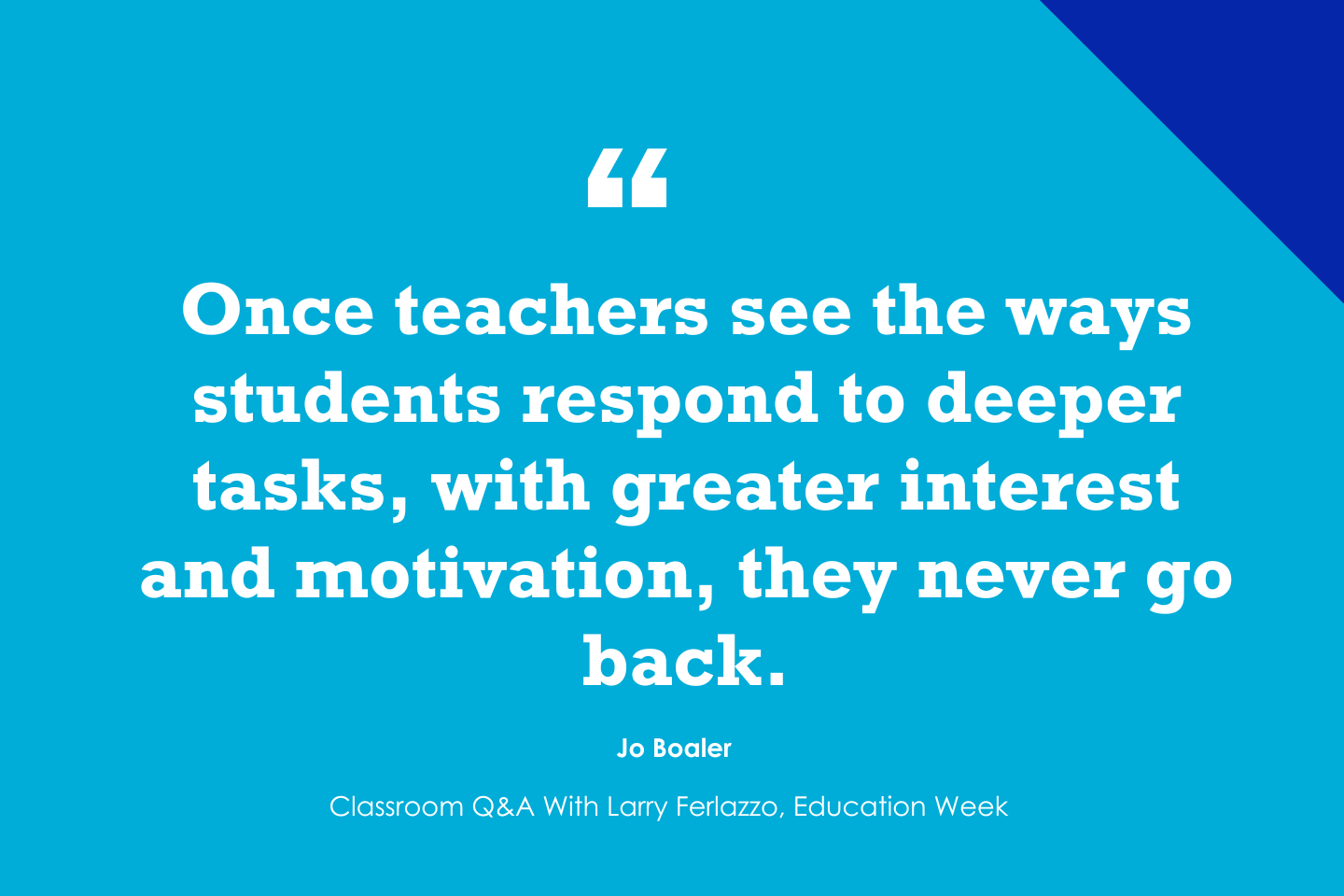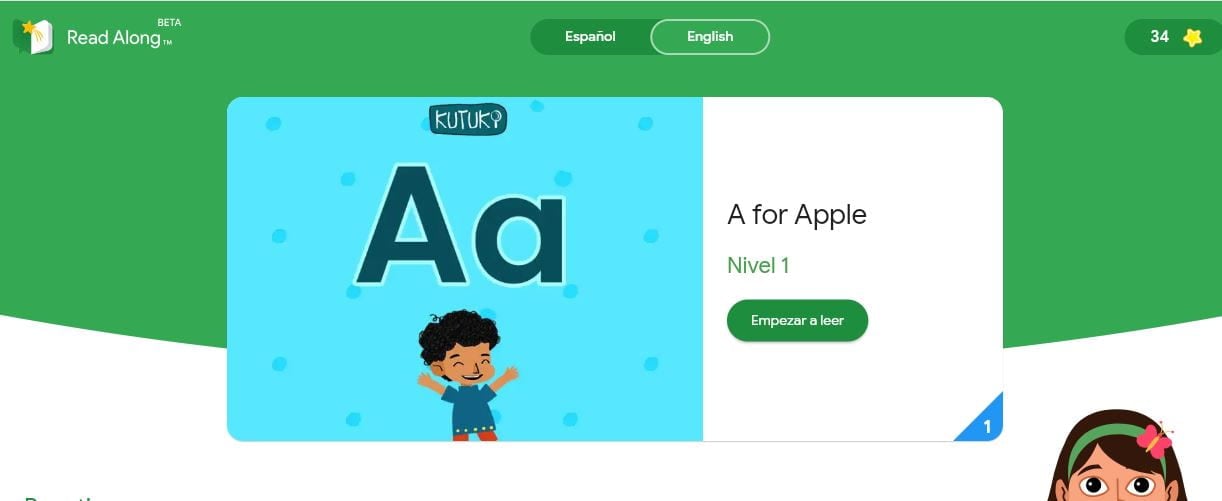The post No Child Left Offline: Confronting the Mental Health Crisis in the Smartphone Era appeared first on Shake Up Learning.
It’s no secret that I love technology.
I usually teach, share, promote, and even celebrate technology. But my bottom line has always been learning.
This blog is about learning, not just about technology.
I’ve also always been a staunch advocate for protecting children, but I’m equally passionate about teaching them valuable skills for a technology-driven world.
Related: 10 Reasons to Think Before You Share Photos of Children Online
No Child Left Offline: Confronting the Mental Health Crisis in the Smartphone Era
As smartphones increasingly became a common item in students’ backpacks, many educators, including myself, saw a potential tool for enhanced learning. The reality, however, was far from what we anticipated. Instead of a learning aid, smartphones turned into the most pervasive distraction we’ve ever encountered in classrooms.
And here lies a paradox: while intended to connect us, these devices (along with social media apps) have spurred a mental health crisis among adolescents and teens, contributing to a marked decline in student engagement and learning.
Teachers are leaving the profession for various reasons, but many are blaming the decline in student behavior and focus and the incessant phone usage.
“We are forever elsewhere.” – Sherry Turkle
“We are forever elsewhere,” observes MIT professor Sherry Turkle, capturing the essence of our smartphone-dominated existence.
The simultaneous rise of the iPhone and social media brought unforeseen addictive behaviors, particularly detrimental to our youth.
Related: Protecting Students in a Digital World
And it’s poised to worsen with advances in AI—think addictive algorithms, inappropriate content, and the targeting of young users. This is a stark reality for Generation Z, which is described as having “a phone-based childhood.” This exposure to premature adult content and a virtual lifestyle is robbing them of essential childhood experiences and developmental milestones.
Consider this: we regulate children’s access to casinos, bars, and adult entertainment, yet we often hand them unlimited access to something arguably more harmful—the Internet.
This paradox is central to Jonathan Haidt’s “The Anxious Generation: How the Great Rewiring of Childhood is Causing an Epidemic of Mental Illness,” a NY Times Bestselling book I am currently engrossed in.
“My central claim in this book is that these two trends—overprotection in the real world and underprotection in the virtual world—are the major reasons why children born after 1995 became the anxious generation.” – Jonathan Haidt, The Anxious Generation
Haidt argues that we have OVERprotected our children in the physical realm while leaving them UNDERprotected in the digital world. (And he has research to back it up.)
This is just the tip of the iceberg! The book is filled with research. I highly recommend that you pick up a copy and read it for yourself.
Do you agree with his findings? As educators, classroom teachers, educational leaders, parents, and community members, do you see evidence of this in your school?
Related: Online Safety for Students at School (and at home)
Four Foundational Harms of a Phone-Based Childhood
Though I’m only halfway through, the compelling data presented compels immediate discussion. Here’s a glimpse at what Haidt calls the Four Foundational Harms of a phone-based childhood:
Sleep deprivation
Social deprivation
Attention fragmentation
Addiction
These harms are not just abstract concepts but every day realities impacting millions of students across the globe. With legislative efforts underway in various states and countries to impose age restrictions on social media, it’s clear that change can’t come soon enough.
Moreover, I am a firm supporter of the growing movement to ban phones from schools—a sentiment echoed by many fellow educators. If we are to tackle this crisis effectively, schools must be sanctuaries of learning and personal growth, not battlegrounds of digital distractions.
A Call to Action
It’s essential to recognize that change begins with us. Jonathan Haidt’s book, “The Anxious Generation: How the Great Rewiring of Childhood is Causing an Epidemic of Mental Illness,” not only outlines the problems but also empowers us with actionable steps to reclaim a healthier, more engaged childhood for future generations.
Here are Haidt’s recommendations:
No smartphones before high school (roughly age 14).
No social media before 16.
Phone-free schools.
Far more unsupervised play and childhood independence.
What do you think? Do you agree with these recommendations?
If so, here are ways you can join the movement and make a significant impact:
Educators and Schools: Implement phone-free policies and introduce more play-based learning environments. These steps can drastically reduce distractions and improve social interactions among students. Download the Educator Action Guide here. (I will be speaking on this topic soon and sharing new resources. Book me here.)
Parents: Start conversations with other parents about setting boundaries for smartphone and social media use. Establish norms that prioritize real-world interactions and delay the introduction of smartphones and social media until the teenage years.
Community Involvement: Spread the word using social media to raise awareness about the mental health crisis linked to digital overuse. Sharing resources and joining local movements can amplify the message and create larger community-based actions.
Legislative Action: Stay informed about and support legislative efforts that aim to protect children from the harms of unchecked digital access. By participating in these efforts, you can help shape policies that foster a safer digital environment for all children.
Personal Action: Reflect on your digital habits and consider how they influence the children around you. Leading by example can be a powerful way to demonstrate healthy digital habits.
By taking these steps, we can collectively work towards a future where technology enhances learning without compromising mental health. Join the movement to free the next generation from the unintended consequences of a phone-based childhood and help pave the way for more meaningful and developmentally appropriate experiences.
For more resources and to learn how you can contribute to this cause, visit The Anxious Generation’s action page. Let’s make a difference together!
© Shake Up Learning 2023. Unauthorized use and/or duplication of this material without express and written permission from this blog’s author and/or owner is strictly prohibited. Excerpts and links may be used, provided that full and clear credit is given to Kasey Bell and Shake Up Learning with appropriate and specific direction to the original content on ShakeUpLearning.com. See: Copyright Policy.
The post No Child Left Offline: Confronting the Mental Health Crisis in the Smartphone Era appeared first on Shake Up Learning.
The post No Child Left Offline: Confronting the Mental Health Crisis in the Smartphone Era appeared first on Shake Up Learning.
It’s no secret that I love technology. I usually teach, share, promote, and even celebrate technology. But my bottom line has always been learning. This blog is about learning, not just about technology. I’ve also always been a staunch advocate for protecting children, but I’m equally passionate about teaching them valuable skills for a technology-drivenContinue Reading
The post No Child Left Offline: Confronting the Mental Health Crisis in the Smartphone Era appeared first on Shake Up Learning. Digital Citizenship, Digital Leadership, online safety Shake Up Learning










